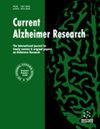揭示阿尔茨海默病发病过程中的吞噬作用:从机器学习分析中洞察诊断和治疗方法
IF 1.9
4区 医学
Q3 CLINICAL NEUROLOGY
引用次数: 0
摘要
背景阿尔茨海默病(AD)是一种广泛的神经退行性疾病,以逐渐出现记忆障碍为特征,主要影响老年人。据预测,到 2050 年,阿尔茨海默病的诊断人数将大幅增加,超过 1380 万人,因此迫切需要发现阿尔茨海默病的新型生物标志物。研究方法为了实现这些目标,我们研究了 AD 患者的免疫细胞浸润以及免疫细胞和免疫功能相关基因的表达模式。此外,我们利用共识聚类法结合侵袭相关基因(ARGs)对AD患者进行分型,并将AD标本分为不同的群组(C1、C2)。通过差分分析和加权基因共表达网络分析(WGCNA),我们精心确定了272个候选基因。随后,我们应用三种机器学习算法--即随机森林(RF)、支持向量机(SVM)和广义线性模型(GLM)--确定了由五个与AD相关的基因组成的致病特征。为了验证这些已识别基因在鉴别 AD 进展方面的预测准确性,我们构建了提名图。结果我们的分析发现,C2群组的免疫表达高于C1群组。根据 ROC(0.956)。我们发现了五个与 AD 免疫细胞和功能相关的特征基因(PFKFB4、PDK3、KIAA0319L、CEBPD 和 PHC2T)。以这五个诊断基因为基础构建的提名图显示出了有效性。在验证组中,ROC 值分别为 0.760 和 0.838。这些结果验证了诊断模型的稳健性和可靠性,肯定了其准确识别 AD 的潜力。结论我们的研究结果不仅有助于加深对AD分子机制的理解,还为药物开发和临床分析提供了有价值的见解。我们研究的局限性在于样本量有限,虽然发现了AD相关基因并阐明了部分机制,但要阐明这些特征基因在疾病中更深入的机制,还需要进一步的实验:我们的分析表明,在机器学习训练组(GSE33000 数据集)中,RF、SVM 和 GLM 模型的接收者操作特征曲线下面积(ROC AUC)值分别为 0.934、0.956 和 0.728。根据 ROC AUC 值,我们选择 SVM 模型作为实验方法,并确定了与 AD 相关的五个特征基因。验证组(GSE122063 和 GSE109887 数据集)的 ROC AUC 值分别为 0.760 和 0.838。本文章由计算机程序翻译,如有差异,请以英文原文为准。
Uncovering the Impact of Aggrephagy in the Development of Alzheimer's Disease: Insights Into Diagnostic and Therapeutic Approaches from Machine Learning Analysis
Background:: Alzheimer's disease (AD) stands as a widespread neurodegenerative disorder marked by the gradual onset of memory impairment, predominantly impacting the elderly. With projections indicating a substantial surge in AD diagnoses, exceeding 13.8 million individuals by 2050, there arises an urgent imperative to discern novel biomarkers for AD. Methods:: To accomplish these objectives, we explored immune cell infiltration and the expression patterns of immune cells and immune function-related genes of AD patients. Furthermore, we utilized the consensus clustering method combined with aggrephagy-related genes (ARGs) for typing AD patients and categorized AD specimens into distinct clusters (C1, C2). A total of 272 candidate genes were meticulously identified through a combination of differential analysis and Weighted Gene Co-Expression Network Analysis (WGCNA). Subsequently, we applied three machine learning algorithms-namely random forest (RF), support vector machine (SVM), and generalized linear model (GLM)-to pinpoint a pathogenic signature comprising five genes associated with AD. To validate the predictive accuracy of these identified genes in discerning AD progression, we constructed nomograms. Results:: Our analyses uncovered that cluster C2 exhibits a higher immune expression than C1. Based on the ROC(0.956). We identified five characteristic genes (PFKFB4, PDK3, KIAA0319L, CEBPD, and PHC2T) associated with AD immune cells and function. The nomograms constructed on the basis of these five diagnostic genes demonstrated effectiveness. In the validation group, the ROC values were found to be 0.760 and 0.838, respectively. These results validate the robustness and reliability of the diagnostic model, affirming its potential for accurate identification of AD. Conclusion:: Our findings not only contribute to a deeper understanding of the molecular mechanisms underlying AD but also offer valuable insights for drug development and clinical analysis. The limitation of our study is the limited sample size, and although AD-related genes were identified and some of the mechanisms elucidated, further experiments are needed to elucidate the more in-depth mechanisms of these characterized genes in the disease. result: Our analyses revealed that in the machine learning training group (GSE33000 dataset), the RF, SVM, and GLM models achieved an area under the receiver operating characteristic curve (ROC AUC) values of 0.934, 0.956, and 0.728, respectively. Based on the ROC AUC, we selected the SVM model as our experimental method and identified five characteristic genes associated with AD. The validation group (GSE122063 and GSE109887 datasets) yielded ROC AUC values of 0.760 and 0.838, respectively.
求助全文
通过发布文献求助,成功后即可免费获取论文全文。
去求助
来源期刊

Current Alzheimer research
医学-神经科学
CiteScore
4.00
自引率
4.80%
发文量
64
审稿时长
4-8 weeks
期刊介绍:
Current Alzheimer Research publishes peer-reviewed frontier review, research, drug clinical trial studies and letter articles on all areas of Alzheimer’s disease. This multidisciplinary journal will help in understanding the neurobiology, genetics, pathogenesis, and treatment strategies of Alzheimer’s disease. The journal publishes objective reviews written by experts and leaders actively engaged in research using cellular, molecular, and animal models. The journal also covers original articles on recent research in fast emerging areas of molecular diagnostics, brain imaging, drug development and discovery, and clinical aspects of Alzheimer’s disease. Manuscripts are encouraged that relate to the synergistic mechanism of Alzheimer''s disease with other dementia and neurodegenerative disorders. Book reviews, meeting reports and letters-to-the-editor are also published. The journal is essential reading for researchers, educators and physicians with interest in age-related dementia and Alzheimer’s disease. Current Alzheimer Research provides a comprehensive ''bird''s-eye view'' of the current state of Alzheimer''s research for neuroscientists, clinicians, health science planners, granting, caregivers and families of this devastating disease.
 求助内容:
求助内容: 应助结果提醒方式:
应助结果提醒方式:


